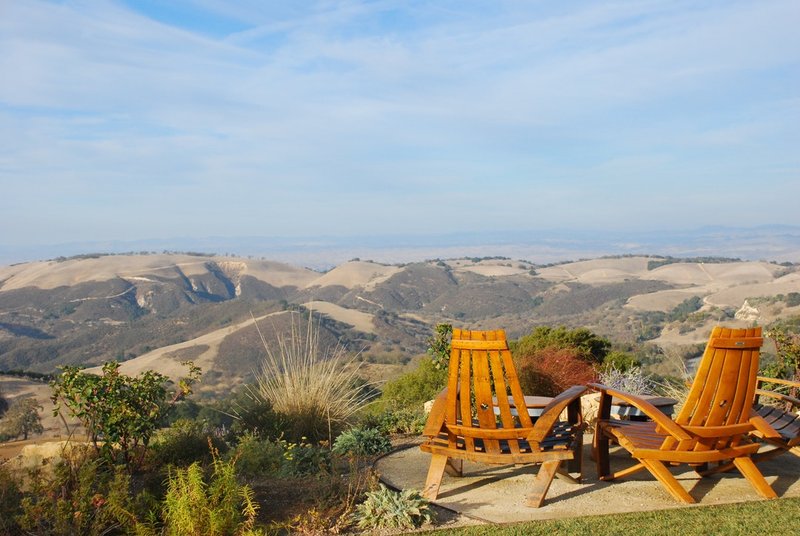CA Contractors #344056

Although the drought in California has improved somewhat, thanks to a wet 2017, approximately 92% of the state is still experiencing either abnormally dry or drought conditions. Even when we're not in a state of drought, it really doesn't make sense to squander the earth's precious water resources on maintaining a lush, green lawn.
That doesn't mean you have to settle for dry, brown, and brittle grass covering your property, however. Instead, check out these ideas for drought tolerant landscaping. They will improve your property's curb appeal while still being kind to Mother Earth!
Mention the term "xeriscaping," which is another way of saying drought tolerant landscaping, and what comes to mind? Is it a dull, depressing expanse of gravel? A yard filled with nothing but cacti?
At its heart, xeriscaping is simply common-sense landscaping. It involves incorporating plants that don't require a lot of H20. It's also about smart planning, efficient irrigation, and thinking outside of the large, green, grass box!
Do you like black-eyed Susans, African daisies, bougainvillea, cosmos, coral vine, daylilies, desert roses, marigolds, oleanders, zinnias, or sunflowers? These are just a few of the many drought friendly plants that thrive in low-water conditions.
Some of these flowers thrive on benign neglect. Others are apt to go dormant in dry or drought conditions and come back to life once there is more water. All of these brightly colored, cheerful blooms will beautify your yard and garden.
What's that you say? You actually like the look of cacti and succulents? Well, you're in luck. These native desert plants live up to their reputation as drought resistant ways to decorate your property.
Aloes, aeoniums, jades, agaves, and echeverias are attractive and incredibly easy to maintain. Once they're established in your garden, they require irrigation twice a month, tops.
Some varieties are colorful, while others offer the stereotypical greenish-grey earth tones. It is entirely possible to create a gorgeous xeriscape using nothing but succulents.
One crucial tip for helping succulents thrive is to make sure you've got plenty of drainage. If the roots of these otherwise hardy plants are exposed to too much water, it will damage and even kill them.
Flowers certainly add attractive color and visual interest to an outdoor space. Other than that, they don't offer a whole lot. You're going to be using water to irrigate plants anyway. Why not make the most of your water usage by choosing plants that provide practical value? We're talking vegetables and herbs.
Many of us think of vegetable gardens as a separate entity from the yard, but ecologically minded Americans are increasingly blurring the lines. And if you're concerned that your yard is going to look like something out of Hee Haw, don't worry. There's a huge variety of ornamental edible plants. Brassicas like kale, rainbow chard, and collards are particularly pretty to grow as well as healthy to eat.
Is the idea of turning your front yard into a 4H project a bit daunting? Start small with perennial herbs that thrive in low-water conditions. Oregano, rosemary, fennel, sage, thyme, and bay are good ones to try.
Another small-scale edible landscaping idea is to grow alliums, like chives, garlic, leeks, and scallions. These are always handy to have in the kitchen, and are attractive in your yard, too.
Before you go whole-hog and plant crops in your yard, check with your local ordinances. Some communities have regulations about how far from the sidewalk edible plants can be.
If you simply can't part with your traditional green grass, at least choose wisely. This goes double if you live in an area that's prone to drought. Low-water varieties to plant include Bermuda grass, St. Augustine grass, ryegrass, buffalo grass, and bluegrass.
Make sure to cultivate the ground where you will be planting grass seed. This will ensure that its roots can penetrate easily. A starter fertilizer that is formulated for turf grass is also a smart choice.
Carpeting an area of your yard with gravel is another surefire way to reduce your water consumption. Gravel doesn't have to mean boring gray pebbles, either. Choose a contemporary gravel material, such as river stone in slate blue or white egg-shaped pebbles. You can even find beach rocks worn smooth by the ocean's waves.
It's best to contain the gravel in a discrete area, such as that surrounding a fire pit, or use it as walkways. You can still incorporate grasses and plants into your yard. However, the strategic placement of gravel will cut down on the square footage you need to irrigate.
Another great option for hardscaping your yard is stone pavers. Again, you can plant ornamental grasses or other types of organic groundcover in between the pavers.
Our last tip for drought tolerant landscaping is to use containers to hold your plants. This will minimize runoff and maximize the irrigation power of the water you do use. Containers are available in an enormous range of sizes, heights, styles, and materials. Vary their heights for visual interest. Combine these containers with the other tips above for a landscape that will make an impressive visual impact.
Many residents of California and other drought-prone areas see xeriscaping and drought tolerant landscaping as a fascinating puzzle to solve, rather than a problem to be overcome. We hope that our suggestions have helped you gain perspective on your yard -- and all of its possibilities!
If you're still stumped, or if you are having a tough time narrowing down all the fantastic options, give Bay Area Landscapes a call. Our pros are happy to help, whether you simply need a question answered or want a complete yard makeover!